by Savannah Apr 21,2025
For the last couple of generations, AMD has been striving to compete with Nvidia at the high end. However, with the introduction of the AMD Radeon RX 9070 XT, Team Red has shifted its focus from the ultra-high-end, dominated by the RTX 5090, to creating the best graphics card for the majority of gamers – a goal it has successfully achieved.
The AMD Radeon RX 9070 XT, priced at $599, offers performance that rivals the $749 GeForce RTX 5070 Ti. This makes it one of the top GPUs available today, and AMD enhances its appeal with the introduction of FSR 4, bringing AI upscaling to an AMD graphics card for the first time. This feature makes the RX 9070 XT an excellent choice for 4K gaming, especially for those not willing to spend $1,999 on the RTX 5090.
Purchasing Guide
The AMD Radeon RX 9070 XT will be available starting March 6 at $599. Be aware that prices may vary, as third-party cards could be priced higher. Aim to purchase one for under $699 if possible.
AMD Radeon RX 9070 XT – Photos
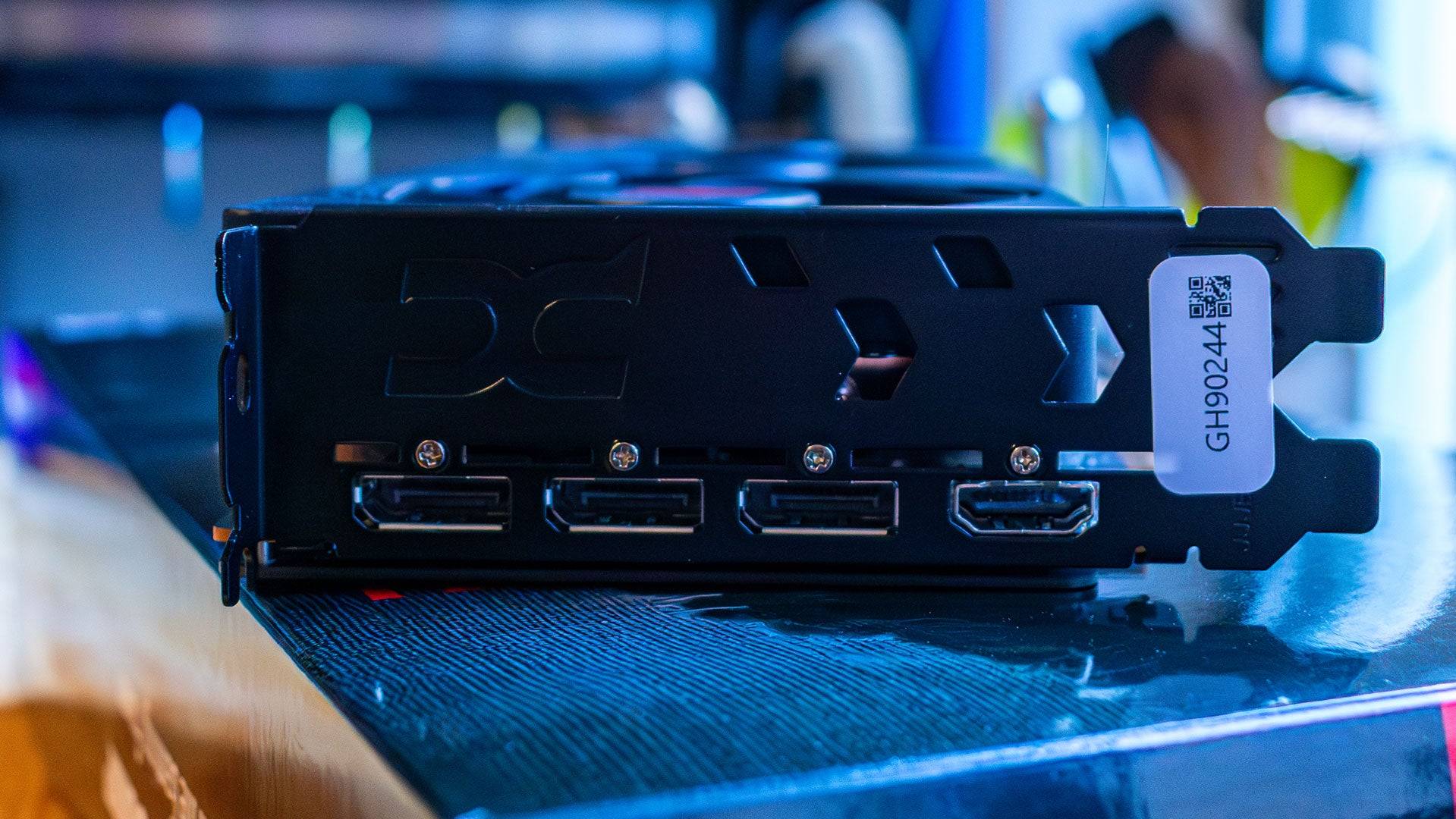
 4 Images
4 Images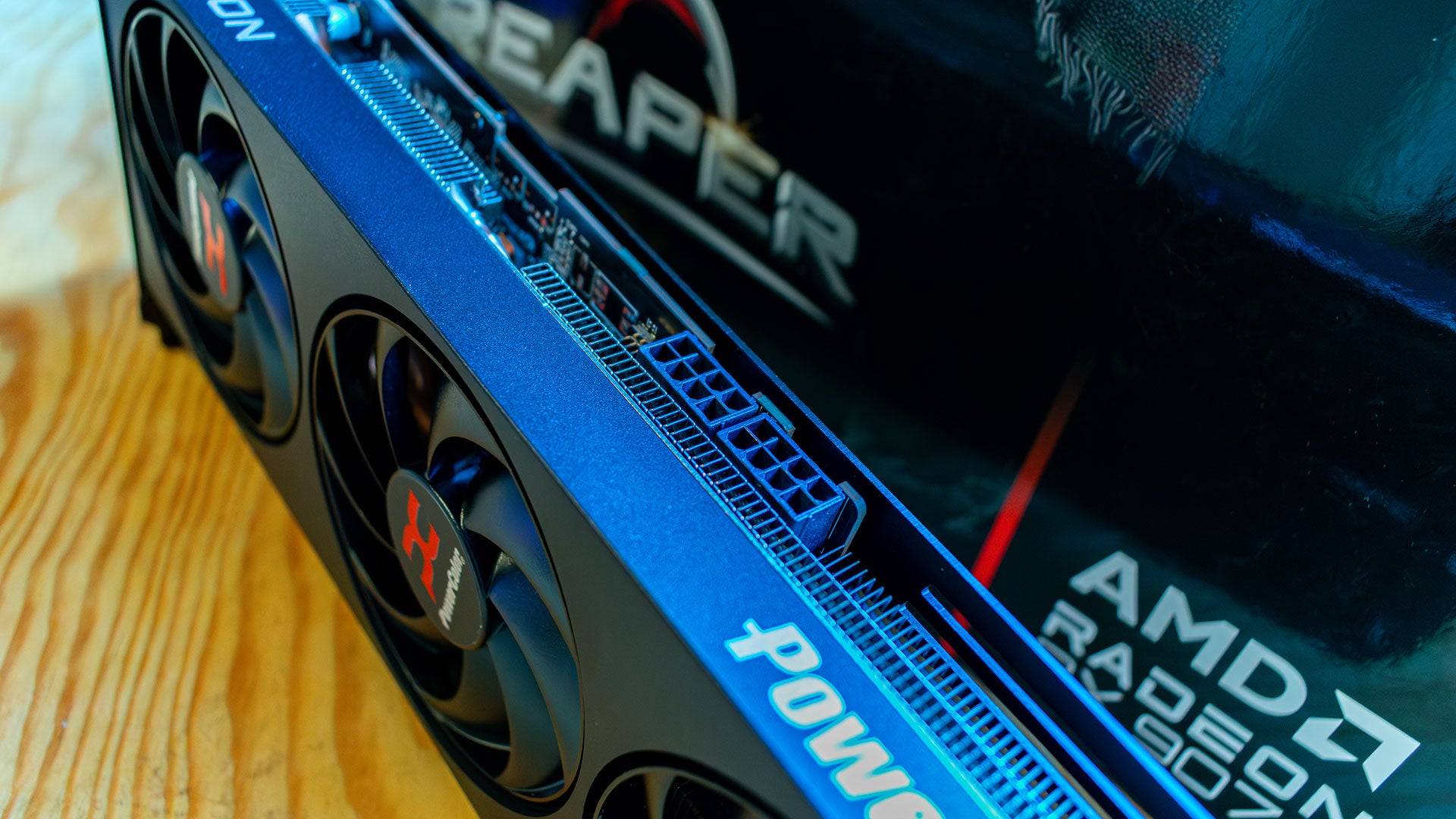
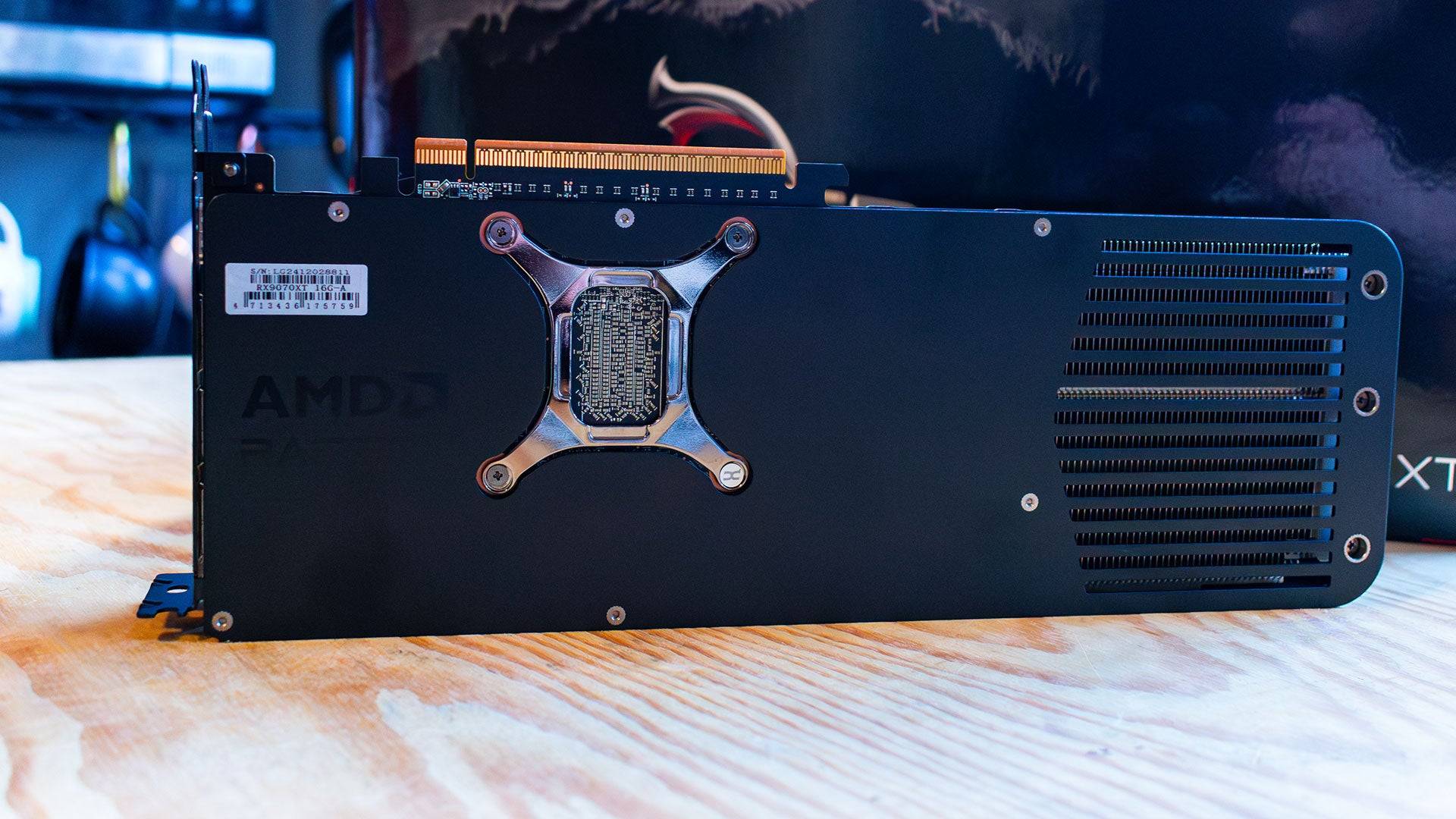
Specs and Features
The AMD Radeon RX 9070 XT is powered by the RDNA 4 architecture, featuring enhanced shader cores and new RT and AI Accelerators. The AI Accelerators are key to FidelityFX Super Resolution 4 (FSR 4), marking the debut of AI upscaling on AMD graphics cards. While FSR 4 doesn't necessarily boost frame rates over FSR 3.1, it significantly enhances image quality. Users seeking higher frame rates can disable FSR 4 via the Adrenalin software.
AMD has also improved the performance of its shader cores, enabling the RX 9070 XT to achieve a substantial performance increase despite having fewer Compute Units (64) compared to the Radeon RX 7900 XT (84). Each Compute Unit contains 64 Streaming Multiprocessors, totaling 4,096, along with 64 ray accelerators and 128 AI accelerators.
The RX 9070 XT comes with 16GB of GDDR6 memory on a 256-bit bus, less than the RX 7900 XT's 20GB on a 320-bit bus. While this is a reduction in both capacity and bandwidth, it remains sufficient for most 4K gaming needs.
Despite its new, more efficient architecture, the RX 9070 XT requires a slightly higher power budget of 304W compared to the 300W of the RX 7900 XT. In testing, however, the RX 7900 XT consumed more power, peaking at 314W versus the RX 9070 XT's 306W.
AMD has opted not to release a reference design for the RX 9070 XT, leaving the market to third-party manufacturers. The Powercolor Radeon RX 9070 XT Reaper, with its compact triple-fan design, maintained a stable temperature of 72°C during testing.
The RX 9070 XT uses standard power connectors, requiring two 8-pin PCI-E connectors, and is recommended for use with a 700W power supply. It features three DisplayPort 2.1a and one HDMI 2.1b port, though the addition of a USB-C port would have been beneficial.

FSR 4
AMD has long needed an AI upscaling solution to compete with Nvidia's DLSS. FSR 4, powered by the AI accelerators in the RX 9070 XT, addresses the ghosting and fuzziness issues that plagued previous versions of FidelityFX Super Resolution. Like DLSS, FSR 4 analyzes previous frames and game engine data to upscale lower-resolution images to native resolution, offering improved image quality at the cost of a slight performance hit.
In testing, the RX 9070 XT achieved 134 fps in Call of Duty: Black Ops 6 at 4K Extreme settings with FSR 3.1 set to "Performance," but this dropped to 121 fps with FSR 4, a 10% decrease in performance. Similarly, in Monster Hunter Wilds, the frame rate fell from 94 fps to 78 fps with FSR 4 enabled, a 20% drop. However, the enhanced image quality may justify the trade-off, especially for single-player games where visual fidelity is crucial.
FSR 4 is an opt-in feature and can be disabled in the Adrenalin software, which was the default setting on the review sample.
AMD Radeon RX 9070 XT & 9070 – Benchmarks
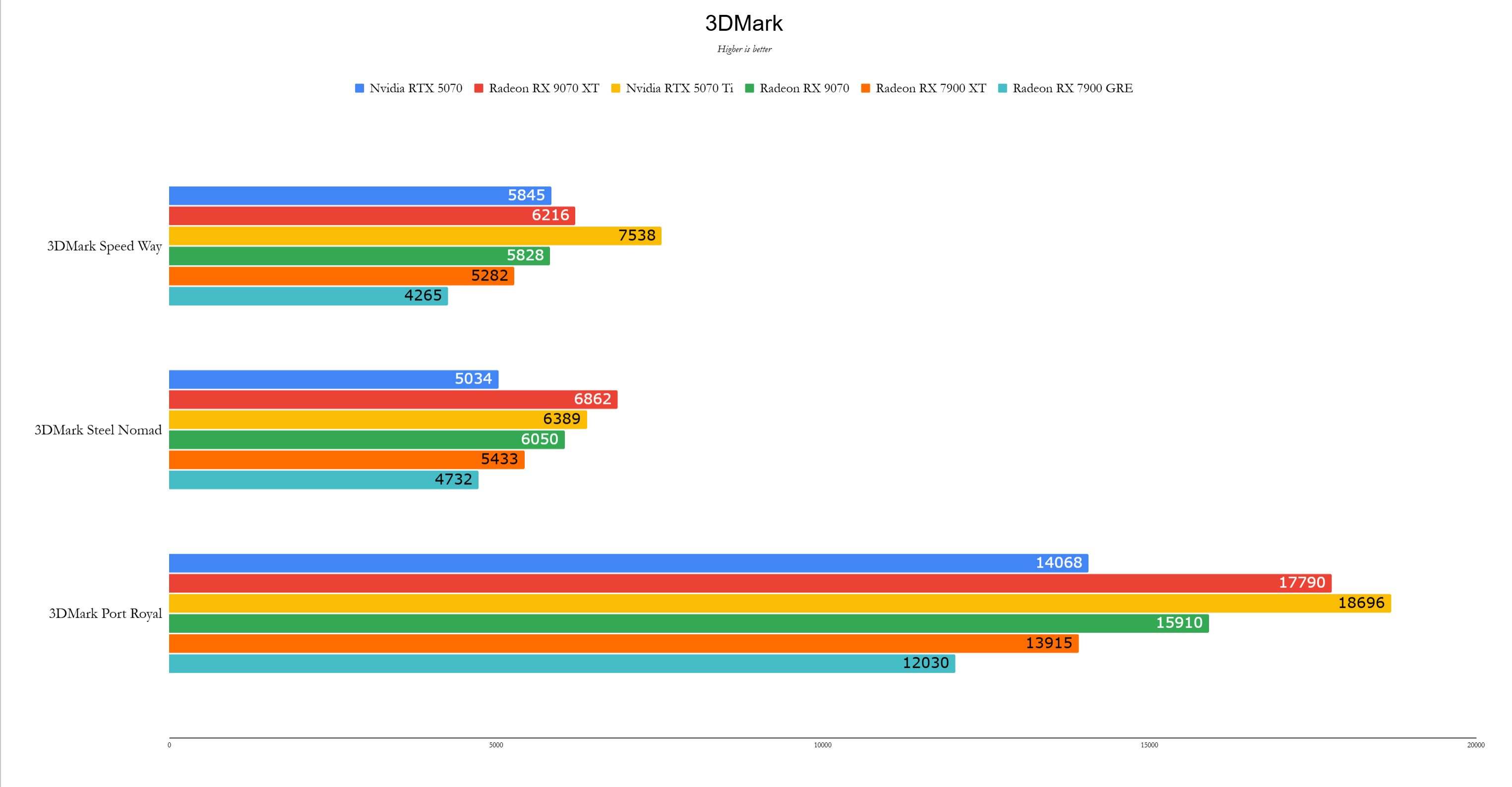
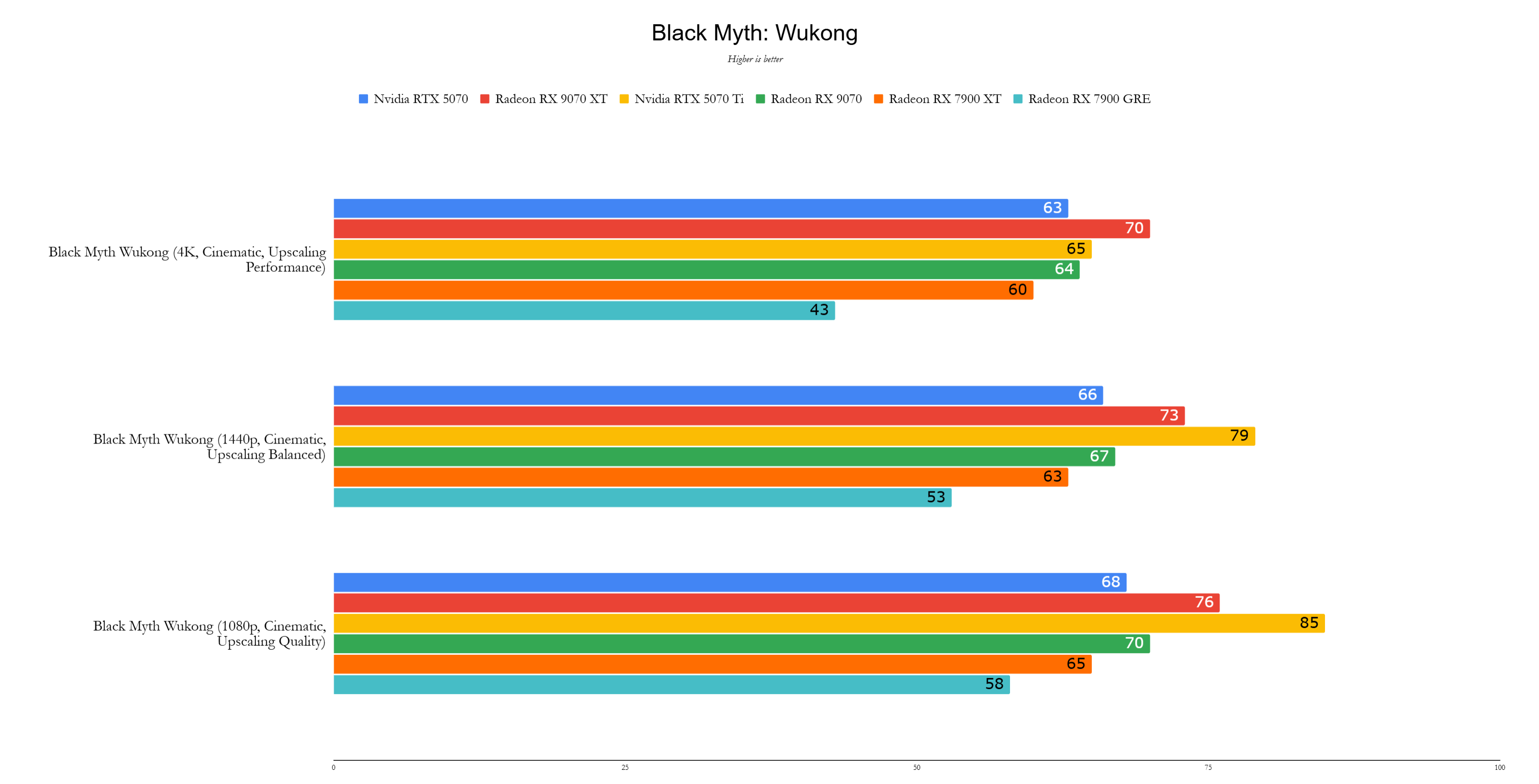 11 Images
11 Images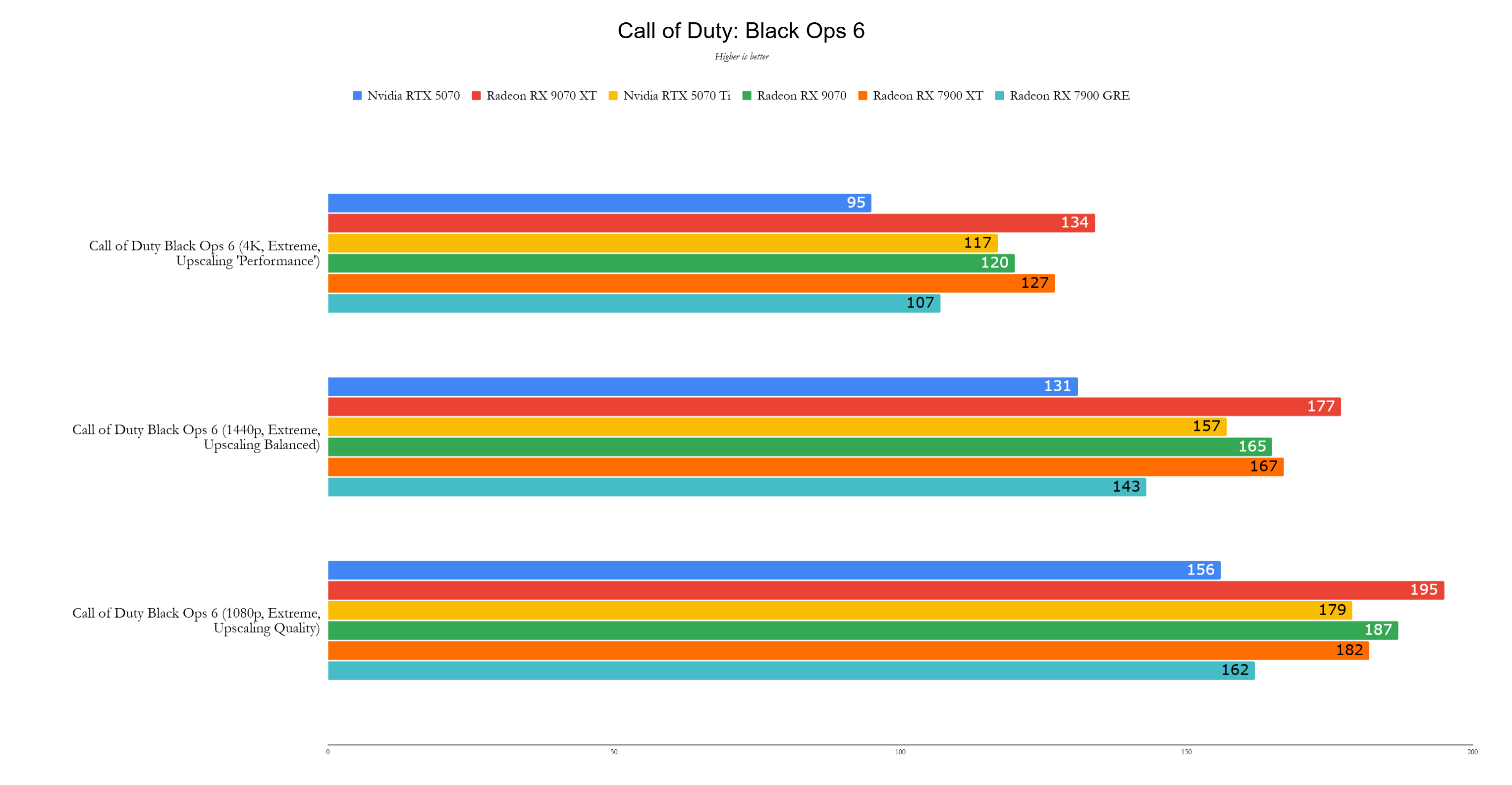
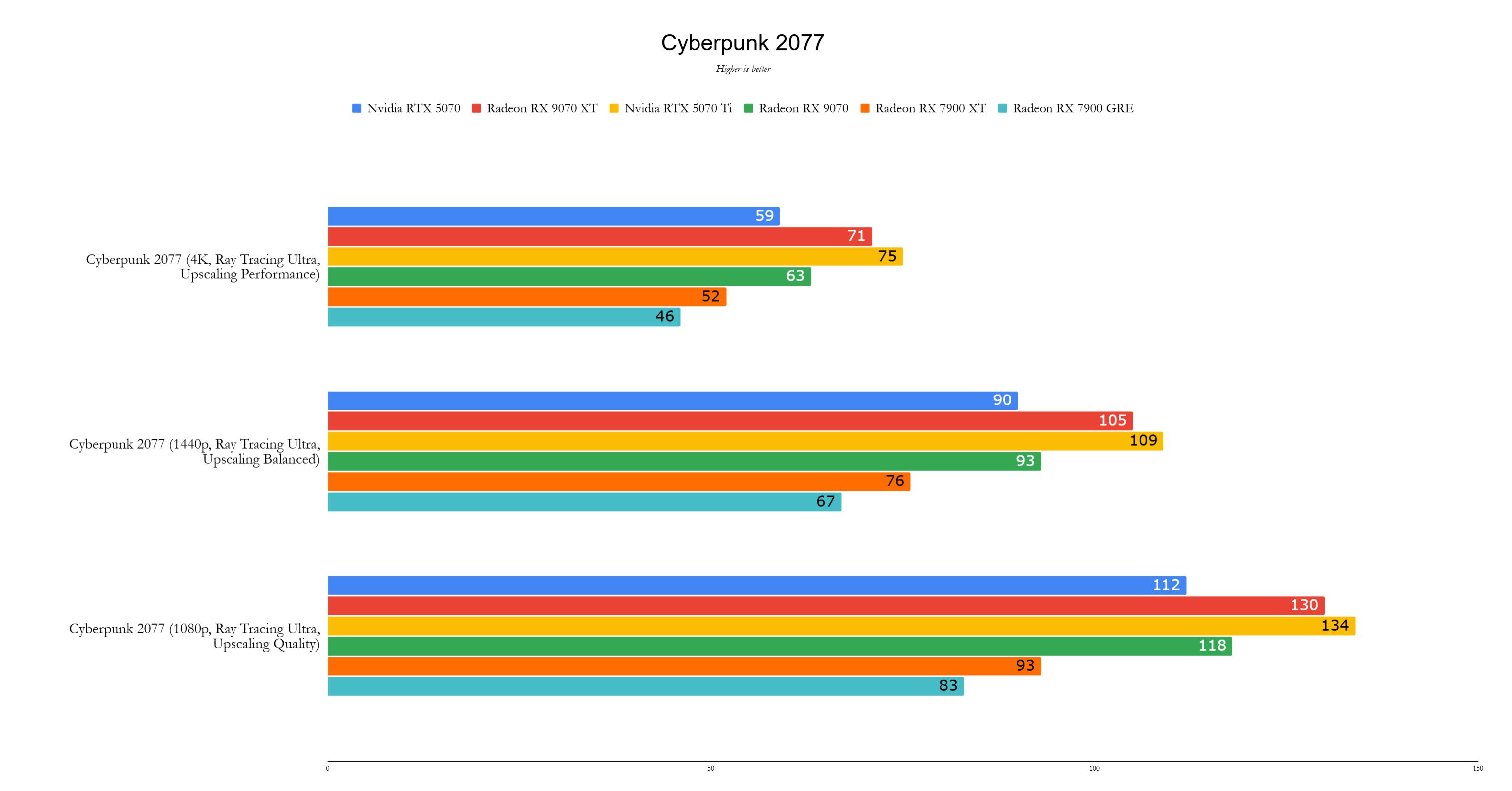
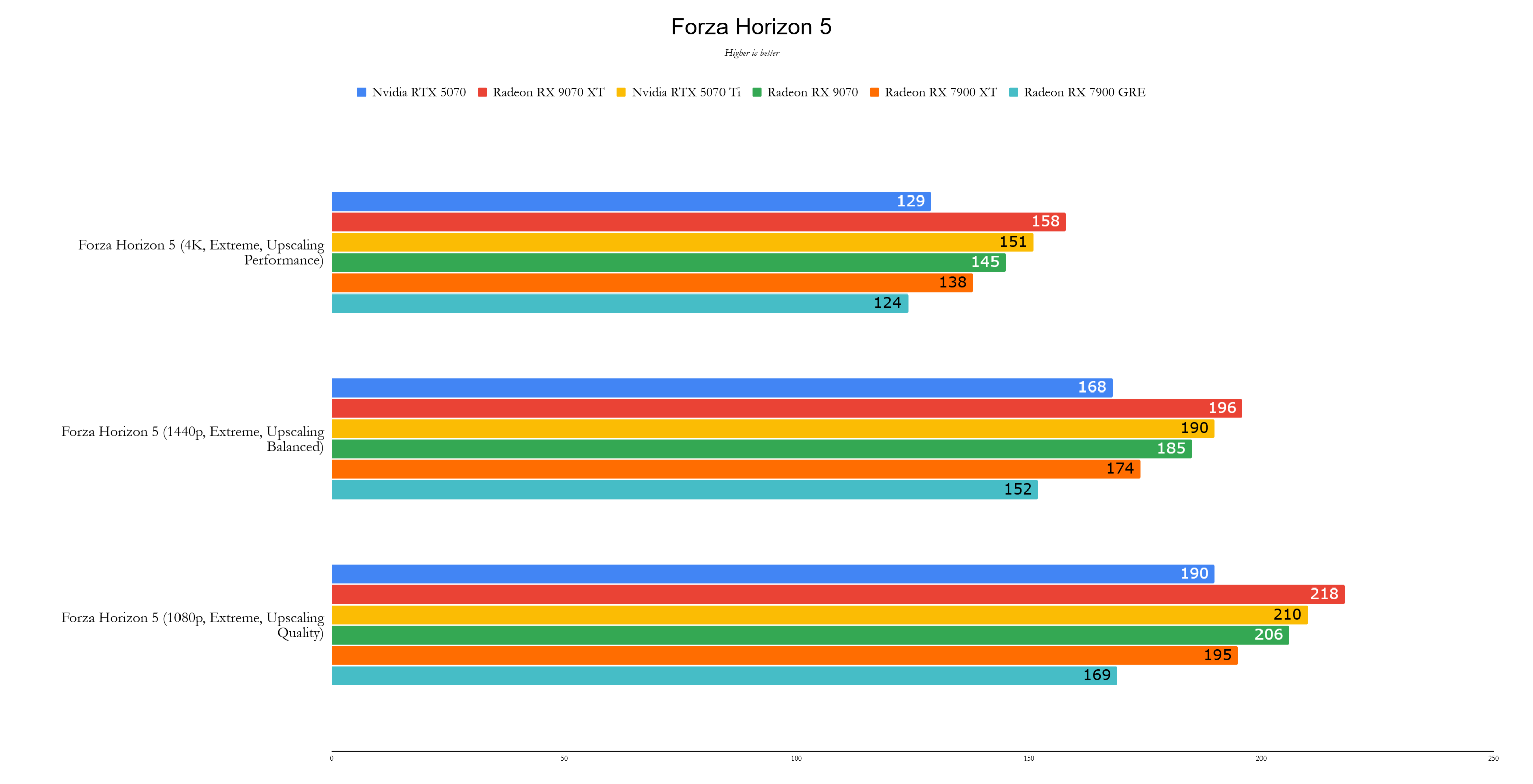
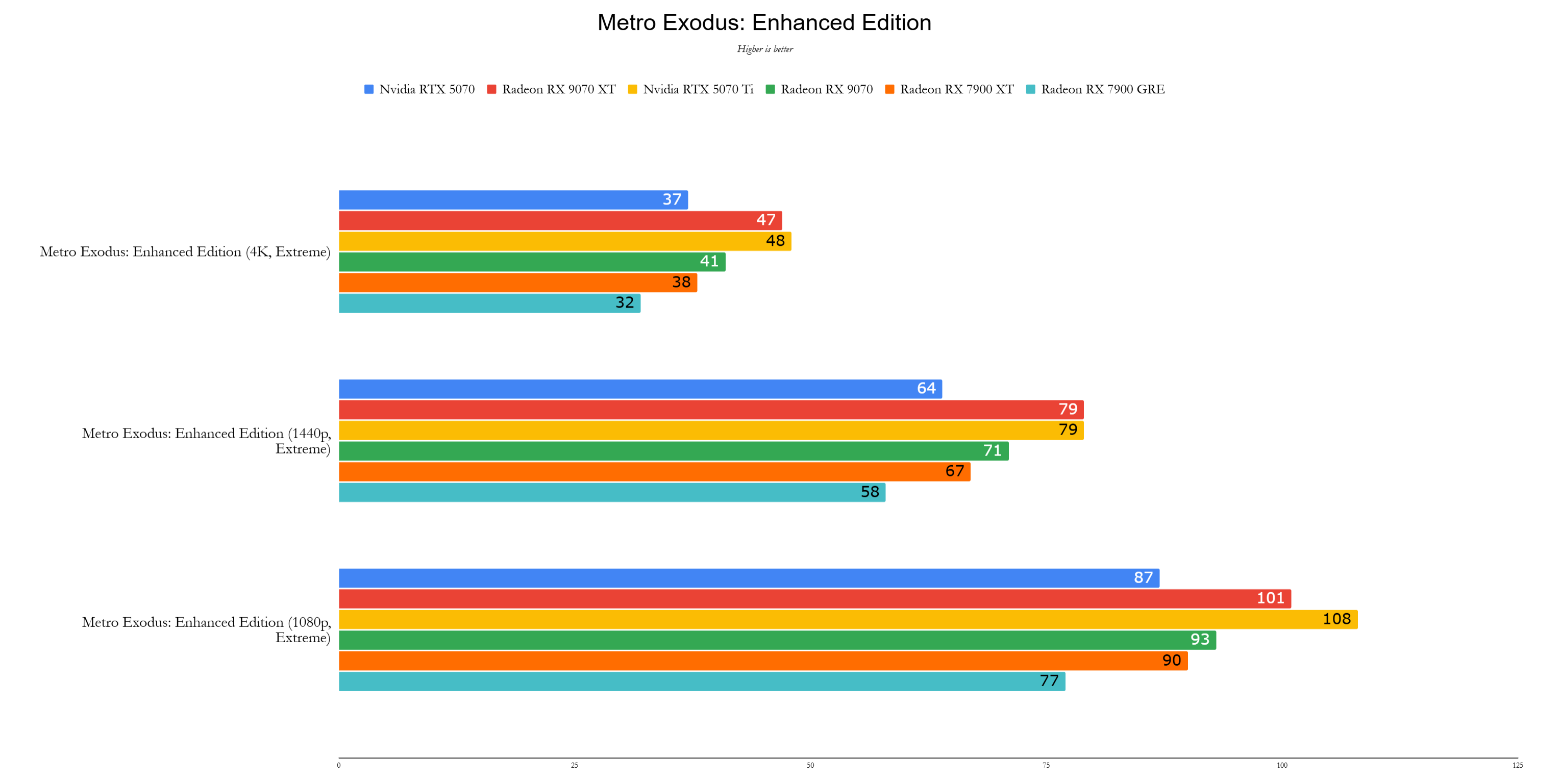
Performance
At $599, the Radeon RX 9070 XT undercuts the Nvidia GeForce RTX 5070 Ti by 21% while delivering an average 2% faster performance. It excels particularly at 4K, maintaining its lead even with ray tracing enabled, making it an excellent entry-level 4K graphics card.
Testing was conducted using the latest drivers available at the time. Nvidia cards used Game Ready Driver 572.60, except for the RTX 5070 on review drivers, while AMD cards used Adrenalin 24.12.1, with pre-release drivers for the RX 9070 XT and RX 9070.
In 3DMark benchmarks, the RX 9070 XT outperformed the RX 7900 XT by 18% in Speed Way, though it lagged 18% behind the RTX 5070 Ti. In the Steel Nomad benchmark, however, the RX 9070 XT's performance jumped to 26% over the RX 7900 XT and even beat the RTX 5070 Ti by 7%.
Test System
In Call of Duty: Black Ops 6, the RX 9070 XT led the RTX 5070 Ti by 15%, though the RX 7900 XT was only 6% behind. In Cyberpunk 2077, the RTX 5070 Ti achieved a 5% lead over the RX 9070 XT, despite the significant price difference.
Metro Exodus saw the RX 9070 XT closely matching the RTX 5070 Ti at 47 fps versus 48 fps, with the RX 7900 XT trailing at 38 fps. Red Dead Redemption 2 showcased strong Vulkan performance from the RX 9070 XT, achieving 125 fps compared to the RTX 5070 Ti's 110 fps.
In Total War: Warhammer 3, the RX 9070 XT fell 13% behind the RTX 5070 Ti, while in Assassin's Creed Mirage, it regained its lead with 163 fps, outperforming the RTX 5070 Ti by 12% and the RX 7900 XT by 9%.
The RX 9070 XT also excelled in Black Myth Wukong, achieving 70 fps at 4K with the Cinematic Preset and FSR set to 40%, surpassing the RTX 5070 Ti's 65 fps by 8%. Forza Horizon 5 saw a 5% improvement over the RTX 5070 Ti, with the RX 9070 XT achieving 158 fps.
The Radeon RX 9070 XT, announced quietly at CES 2025, feels like a strategic move by AMD to counter Nvidia's Blackwell graphics cards. Priced at $599, it represents a return to more reasonable pricing in the graphics card market. While it doesn't match the raw power of the RTX 5080 or RTX 5090, it offers exceptional value and performance for most gamers, reminiscent of the value provided by the GTX 1080 Ti at its launch in 2017.
The AMD Radeon RX 9060 XT Is Finally Confirmed
AMD has unveiled the Radeon RX 9060 XT at Computex 2025, a follow-up to the successful RX 9070 XT released in March. However, specifics about this mid-range graphics card are still under wraps. The AMD Radeon RX 9060 XT comes equipped with 32 Compute Units and a robust 16GB of GDDR6 memory, ideal fo
May 23,2025

Best Deals on AMD Radeon RX 9070 and 9070 XT Prebuilt Gaming PCs Starting at $1350
The highly anticipated AMD Radeon RX 9070 and RX 9070 XT graphics cards have hit the market, but like their Nvidia counterparts, they're often out of stock and hard to find at retail prices. Don't worry, though; you can still get these powerful GPUs in prebuilt gaming PCs at a reasonable cost. These
May 13,2025
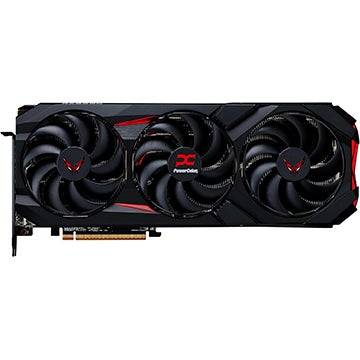
"Where to Buy AMD Radeon RX 9070, 9070 XT Graphics Cards"
If you decided to hold off on Nvidia's Blackwell GPUs to see what AMD had in store, you've made a wise choice. The AMD Radeon RX 9070 and RX 9070 XT have emerged as the mid-range champions of this generation, delivering exceptional performance at a more affordable price point than their Nvidia count
May 13,2025
Zenless Zone Zero Update Cycle Leak Hints at Future Content cadence
All Mavuika Materials, Kit, and Constellations in Genshin Impact
Counterfeit Bank Simulator: Minting Solution for Economic Crises
Marvel Rivals: Season 1 Dracula Explained
Best Xbox Game Pass Games For Kids (January 2025)
Solo Leveling: Global Tournament Draws Near
Power Rangers: Uncover Hidden Secrets in Rita's Carnival and Cemetery
Roblox: Anime Auras RNG Codes (January 2025)